3DPrint.com | The Voice of 3D Printing / Additive Manufacturing |
- BICO Buys Bioprinting Startup Allegro 3D—8th Acquisition in a Year
- NASA Copper Alloy Qualified for Use with VELO3D Metal 3D Printers
- Harvard Grads Aim for Mass 3D Printed Alt Meats with $3M Seed Round
- How Intelligent Automation and Networking of 3D Printing and Post-processing Increase Productivity
| BICO Buys Bioprinting Startup Allegro 3D—8th Acquisition in a Year Posted: 10 May 2022 06:00 AM PDT BICO (STO: BICO) has purchased another bioprinting startup, adding to its now massive portfolio of 13 acquisitions. This time around, it was rapid-throughput bioprinting company Allegro 3D, a spin-off from the University of California San Diego (UCSD). Led by principal investigator and CEO Wei Zhu, Allegro 3D develops technology for fabricating tissue models at the industrial scale to advance drug discovery and assay development. The $6 million acquisition, announced Friday, is meant to complement BICO's existing bioprinting systems by helping customers increase their output of biofabricated constructs. As bioprinting technology, like BICO's, continues to lower entry barriers for researchers, universities, and companies worldwide, identifying faster solutions is essential. Following the deal’s announcement, BICO claimed that Allegro 3D's tools could enable high precision and high-speed bioprinting tailored for multi-well printing, providing life science companies the features needed for developing tissue constructs in regenerative medicine and drug testing workflows. According to a company statement, Allegro 3D's patented light-based printing technology will be commercialized by BICO subsidiary Cellink but will remain an independent entity. Given the high throughput nature of the process, the addition of Allegro 3D's impressive portfolio, including its proprietary digital light processing (DLP) system that prints directly into multi well-plates, provides a massive injection in opportunities to scale operations for bioprinting customers. 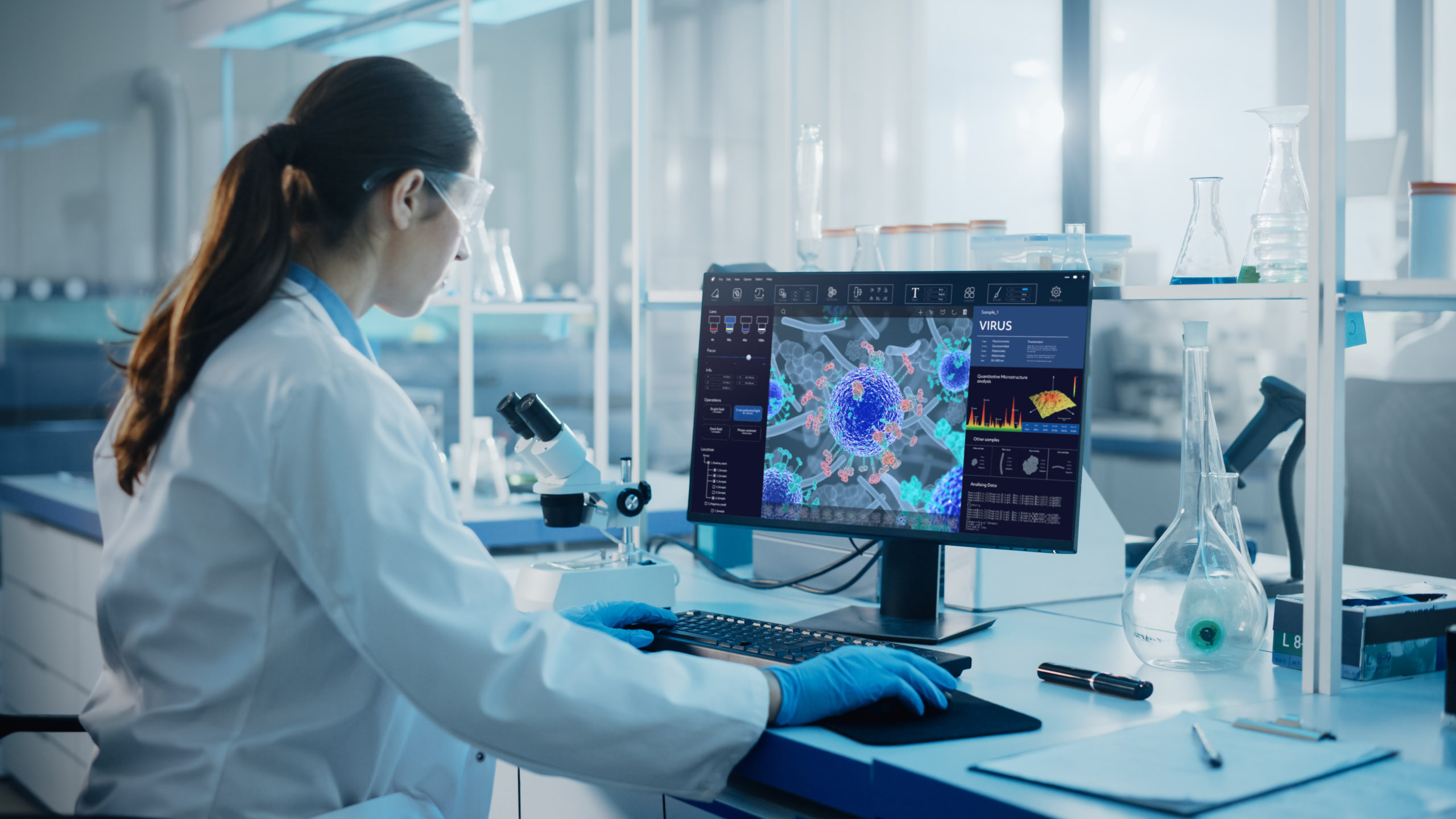 BICO partnered with the Center for Contemporary Sciences to support FDA Modernization Act of 2021. Image courtesy of Center for Contemporary Sciences. As Zhu announced the next step in Allegro 3D's journey through a LinkedIn post, he also looked back at his work with co-founder Shaochen Chen, a bioprinting expert, professor, and chair of the NanoEngineering Department at UCSD. The company's success builds on the bioprinting technology that Chen's team invented in 2013, which started out as a platform for creating living biological tissues for regenerative medicine, with projects 3D printing liver tissues, blood vessel networks, heart tissues, spinal cord implants, and even coral-inspired structures that marine scientists can use for studying algae growth and for aiding coral reef restoration projects. In 2017, Chen co-founded Allegro 3D with nanoengineering alumnus Zhu, and together they received grant and funding to develop the 3D bioprinting model into the fully commercialized Stemaker device, which is automated for printing in 6-, 12-, and 24-well plates and has a compact design that makes it easily fit any biosafety cabinet.
With the acquisition officially closing on May 5, 2022, Allegro 3D will be consolidated in BICO’s financial statements and the financial reporting in the second quarter of 2022. Allegro 3D's products were commercialized by year-end 2021, and in 2022 the company is expected to generate roughly one million dollars in revenue with positive EBITDA (earnings before interest, taxes, depreciation, and amortization) margins. In the near term, Allegro 3D is expected to grow exponentially and above BICO's financial targets. Commenting on the deal, BICO's Head of Mergers and Acquisitions (M&A), Jacob Thordenberg, said this follows the brand's strategy of "add-on acquisitions" where Allegro 3D complements Cellink's product portfolio strongly and can quickly be integrated into the current product offering and commercialization infrastructure. Moreover, the brand claims its solutions "bring us closer to a world where on-demand tissue is a reality," reducing the dependency on animal models. After rebranding as BICO, the company revealed that its net sales grew by more than 600% during the first half of 2021, driven by M&As and organic growth. For the full year 2021, the company revealed that 44% was organic growth, while the rest comes from the new companies in its portfolio. The strategy to acquire complementing technologies to cover the entire bioprinting workflow has been around since 2018, when BICO took over the German provider of automated liquid handling instruments, Dispendix. Following that first move, the company acquired 12 other startups, including Allegro 3D. However, news of the latest M&A deal follows an internal rift that started after the departure of one of the company’s co-founders and Chief Financial Officer (CFO), Gusten Danielsson. In late April 2022, Danielsson, responsible for strategizing BICO's economic direction, said CEO Erik Gatenholm was "no longer the right leader for the company, even if he remains a controlling shareholder." The internal battle is not over yet, but that hasn't seemed to stop the company from moving forward with its strategy. The post BICO Buys Bioprinting Startup Allegro 3D—8th Acquisition in a Year appeared first on 3DPrint.com | The Voice of 3D Printing / Additive Manufacturing. |
| NASA Copper Alloy Qualified for Use with VELO3D Metal 3D Printers Posted: 10 May 2022 05:30 AM PDT Velo3D announced that it has qualified GRCop-42, a NASA-developed copper-chromium-niobium alloy, for use with Velo's Sapphire range of metal 3D printers. Velo3D, a leading additive manufacturing (AM) startup based in Silicon Valley, specializes in producing AM solutions optimized for the aerospace and space sectors. The company's first demo parts printed from GRCop-42 will be exhibited at the Velo3D booth (#1508) at the RAPID + TCT conference next week (May 17-19), in Detroit. Texas-based machine shop Knust-Godwin, which already has three Velo3D systems in use, will be the first customer to receive a Sapphire for GRCop-42. Aside from Knust-Godwin, Velo3D noted in a press release that it has several more systems capable of printing with GRCop-42 currently on order. Along these same lines, the CEO and founder of Velo3D, Benny Buller, said that the company has had "extensive demand" for Sapphire machines that can print with the copper alloy. 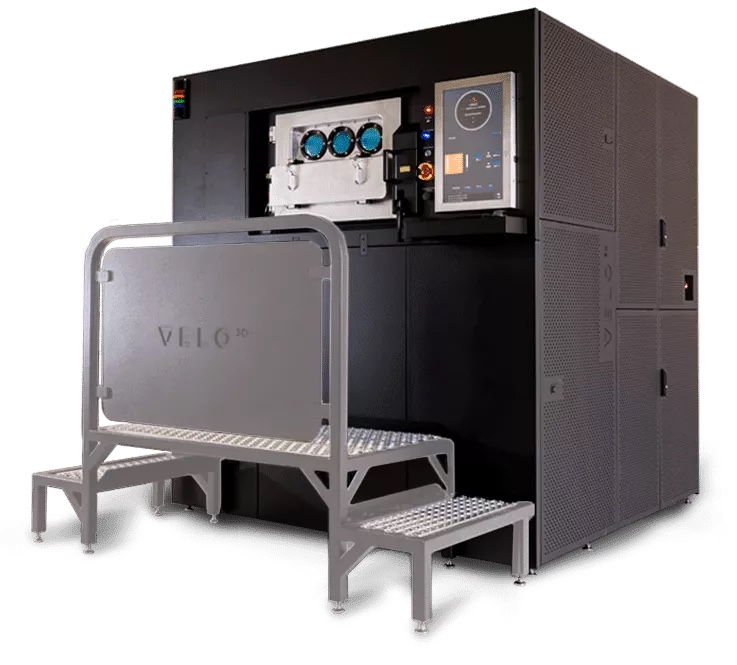 The third-most-used industrial metal, copper is especially prized by engineers for its resistance to corrosion and thermal conductivity. These qualities make copper ideal for end-use applications involving extreme environments, and are indeed the two main attributes that make the element so crucial to the space sector. It’s no surprise, then, that, in its Copper Additive Manufacturing 2020–Market Database and Outlook report, SmarTech Analysis anticipates over 1.4 million kilograms of copper powder, both pure and alloys, to be shipped by 2029. In this vein, as the tests conducted thus far have illustrated, the initial intended use of GRCop-42 is for 3D-printed rocket engines: the engines get their strength from the chromium and niobium, and their ability to remain consistent after cooldown from the copper.  The "GR" in "GRCop" stands for Glenn Research, in reference to the NASA institute where GRCop-42 and its "predecessor", GRCop-84, were created. As noted in a 2019 academic paper on the application of GRCop-42 in 3D-printed combustion chambers for rocket engines, NASA started studying the use of copper-chromium-niobium alloys for conventional production methods in 1987. The initial tests led to GRCop-84 and GRCop-42 being "selected for further development", which ended up lasting through 2005. During this first phase, GRCop-84 was studied much more thoroughly than GRCop-42. The next phase of testing these materials, for use in AM applications, began in 2014, when NASA engineers started using GRCop-84 in laser powder bed fusion (LPBF) production of combustion chambers. In 2018, NASA began similar testing with GRCop-42, at which point the latter alloy quickly started to gain favor with engineers. In another 2019 research paper, the authors concluded, "In this study, MSFC [Marshall Space Flight Center] and GRC [Glenn Research Center] demonstrated that GRCop-42 is a readily printable alloy that can be additively manufactured into fully dense components with consistent properties at higher throughput rates than its predecessor, GRCop-84." Velo3D is one of the first companies able to sell machines capable of working with this alloy, which further solidifies the company's place among the leaders of the space AM sector. And although GRCop-42 is so far being sought for this particular purpose, now that systems that are capable of working with it are commercially available, new possibilities for the alloy's use will no doubt be explored. This development is a good reminder of how long in the making has been the payoff that the 3D-printing industry, as a whole, is now finally starting to see. Images courtesy of Velo3D The post NASA Copper Alloy Qualified for Use with VELO3D Metal 3D Printers appeared first on 3DPrint.com | The Voice of 3D Printing / Additive Manufacturing. |
| Harvard Grads Aim for Mass 3D Printed Alt Meats with $3M Seed Round Posted: 10 May 2022 05:00 AM PDT Businesses trying to revolutionize the alternative meat industry through 3D printing attracted hundreds of millions of dollars in funding in the last ten years, growing from just a few companies to dozens in the same time frame. One of the newcomers in the race to recreate meat sustainably is Y Combinator-backed startup Mooji Meats. Based out of Baltimore, Maryland, this developer of meat alternatives leverages its own advanced 3D printing process and has just raised $3 million in an oversubscribed seed round the same year it launched to the world. Led by technology startup accelerator Y Combinator, the round included participation from food tech VC firms AgFunder, Lever, Lifely, Good Startup, Clear Current Capital, Siddhi Capital, and other investors like Collaborative Fund, FoodHack, and several angel backers. The startup said the funds would go towards enabling the next generation of alternative meats. As one of the world's leading start-up accelerators, Y Combinator has backed unicorns like Airbnb, Reddit, Coinbase, Stripe, DoorDash, and GitLab. Today Mooji Meats is part of Y Combinator's Winter 2022 batch, which was presented during the 34th Demo Day along with 413 other startups from 42 countries, representing more than 80 sectors. 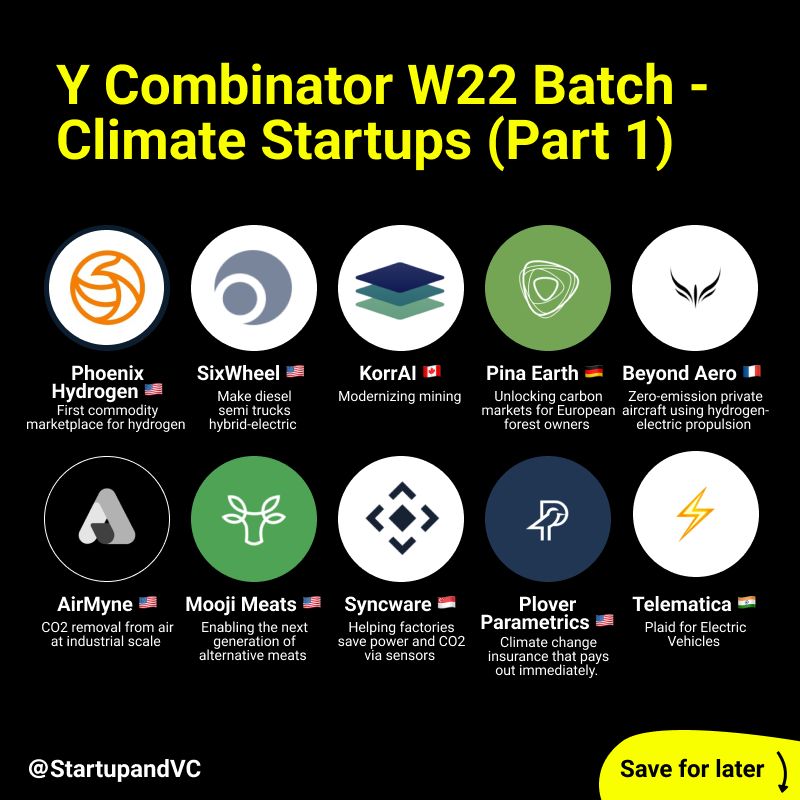 Y Combinator Winter 2022 batch, climate startups includes Mooji Meats. Image courtesy of Mooji Meats via LinkedIn. Founded by software engineer Insa Mohr and Johns Hopkins University professor Jochen Mueller, Mooji leverages new printing technologies developed by Harvard University‘s Faculty of Arts and Sciences engineering school SEAS (John A. Paulson School of Engineering and Applied Sciences) to create what it calls "meat 2.0." This is basically the next generation of ethical and sustainable meat, which does not require farming and butchering livestock. Both founders studied at Harvard University. Mohr finished her master's degree in information technology, and Mueller did his postdoc work to texture plant-based meat and cultured meat at Harvard SEAS, worked at the research lab of microscale 3D printing pioneer Jennifer Lewis and became a research fellow at the acclaimed Wyss Institute for Biologically Inspired Engineering. Through their combined experience, it's easy to see why they would turn to 3D printing technology to channel their interest in alternative meats. According to Y Combinator, by building a system that utilizes this new technology, which can print with hundreds of nozzles simultaneously, Mooji can create alternative meats quickly, inexpensively, and at scale while closing the gap in taste, look, feel, nutrition, and cost between meat mimics and real meat. Tapping into this $1 trillion market opportunity is the ultimate goal for the founding duo. Still in its early stages, the team plans to develop the first meat prototype within the next six months, hoping to bring its printers to market in the next year and a half. Just two weeks ago, Mooji was "graduating" from Y Combinator, and today the startup has already received millions of dollars in funding and has staged a plan for the future of its product. Although we tend to hear about startups focusing on either plant-based or cultured meats, we rarely get to learn about a company tackling the two simultaneously. But for Mooji Meats, the core of the business is the technology; whether it’s used for plants or cells is not the issue. The gist of their proposal is centered around creating whole cuts instead of ground meats to compete with the real meat industry in the long term. In the last few years, 3DPrint.com has followed competing brands through this path, including Redefine Meat, Novameat, and even Plantish with its alternative whole-cut fish filets. But there’s nothing like a bit of competition to get this new industry up and running. Mooji Meats considers its proprietary process to yield best-in-class textures for an "authentic mouthfeel," which industry experts deem to be one of the toughest challenges that newcomers face. Recreating that full, savory feel of eating meat needs to be at the top of the list for companies trying to sell an alternative to traditionally sourced meat. But other than texture, Mooji has also focused on creating a solution that will allow for high throughput, suitable for mass production, while costing less than one-fifth of comparable processes. Clearly, the future of this industry is texture, scalability, and cost, but if Mooji has all three of these qualities down already, then we can't wait to see what they will launch next. The post Harvard Grads Aim for Mass 3D Printed Alt Meats with $3M Seed Round appeared first on 3DPrint.com | The Voice of 3D Printing / Additive Manufacturing. |
| How Intelligent Automation and Networking of 3D Printing and Post-processing Increase Productivity Posted: 10 May 2022 04:30 AM PDT The market for Additive Manufacturing (AM) processes continues to grow and will even fivefold by 2030, according to SmarTech Analysis. More and more companies are taking a step towards the factory of the future because of the advancement of standardization in Additive Manufacturing at the industry level. Moreover, the advantages of Additive Manufacturing are convincing: lower inventory costs due to individual post-production of parts, a higher degree of specific product configurations, and flexible prototyping of complex geometries. Nevertheless, AM is still often found in prototyping, small batch production, or as a supplement to mass production lines. The main challenge still lies in the long production time of a component in the AM system, whereas upstream and downstream production steps have significantly shorter cycle times. But companies that start right here can save up to 70 percent of their manufacturing costs and make their AM fit for (large-scale) series production. How? With intelligent automation and networking of the individual AM process steps using state-of-the-art transport, handling, and software technology. In this way, companies enable an optimal flow of materials, lower cost per part, and a safer working environment for employees. Four reasons for automation1. Increased efficiency and productivityDue to automation, the printing process is intelligently networked and synchronized with downstream process steps (post-processing) that have significantly shorter cycle times. A practical example: while the part is still being printed in system 1, the finished build job of system 2 is already transported to downstream stations such as unpacking and inspecting; system 2 can already start the next print. No manual intervention is required, so production can also continue even though operators are not on duty. Furthermore, there is no idle time – on the line as well as on the machine side. Employees can concentrate on more demanding tasks during the shift. 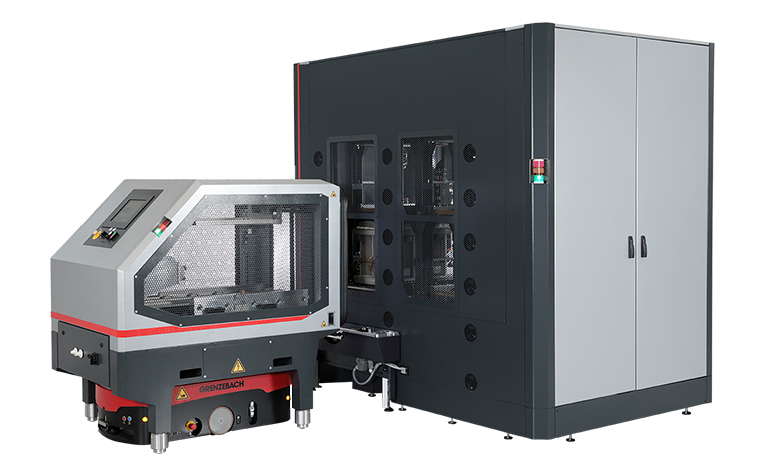 Exchange and transport solutions for a fully automated process chain and several build jobs is a row for Laser Sintering 2. Lower cost per partIntelligent networking of the individual production steps allows companies to make maximum use of equipment. Companies enhance the workload of all equipment along the process chain and avoid unnecessary investments. For example, automation enables machines to be used in three-shift operations, even though only one or two shifts are staffed with employees. In this way, companies not only optimize their production times and machine utilization (OEE) but ultimately even produce at lower costs per part.  Bin-picking solutions with a camera-based part detection and robot-based sorting bring a significant advantage for mass customization. 3. Enabling occupational health and safetyDuring the post-processing of 3D-printed parts, there are health risks due to fine dust exposure and the handling of hot objects. Using automated guided vehicles (AGV) with suitable sealed transport solutions, customized interfaces and machine fittings, and installed conveyor lines, the dust exposure for employees and the risk of injury from hot objects are reduced.  Inert Gas Container and Docking Station for a fully automated and dust-tight transport in an EOS M 400 system environment 4. Repeatability and reproducibilityBy always carrying out individual process steps, in the same way, the undesirable influence on the often still sensitive manufacturing process is minimized. The path is cleared for 24/7 series production and a light-out factory. Intelligent automation and networking with the right partnerNetworking the various working steps in AM processes is essential for a successful factory of the future. Moreover, it is fundamental to have a reliable and experienced partner at the side to master the challenges of additive series production. Grenzebach is the ideal partner for automating and networking individual process steps in powder bed-based Additive Manufacturing. Together with leading manufacturers of industrial 3D printers and post-processing equipment, Grenzebach develops individual solutions: from single machines to holistic automation concepts. Customers benefit from Grenzebach's wide range of transport, exchange, bin picking, depowder, and combined, digital solutions – for higher efficiency and smooth workflow. Grenzebach is also active as a partner in research projects such as NextGenAM and Polyline. The latter focuses on the Additive Manufacturing series production of plastic components. Here, the company contributes automated hardware and software interfaces as well as holistic solutions for material flow and transport between the individual processes. With production sites in Germany, Romania, the US and China, as well as additional worldwide service locations, Grenzebach offers global on-site customer support and contact. Meet Grenzebach experts – liveCompanies can meet the AM experts of Grenzebach and explore the company's latest automation solutions at the largest and most important trade fair for Additive Manufacturing in the US RAPID + TCT from May 17 – 19, 2022, at Huntington Place Detroit, booth 1131. On top, customers can arrange an individual guided tour through Grenzebach's dynamic and innovative '365 days Grenzebach World' in Hamlar (Germany) – digitally or on-site – to get to know the latest automation solutions for 3D technologies. Not attending RAPID? Meet Grenzebach experts – live or digitallyYou like to get to know more about Grenzebach technologies and solutions? Come and explore our dynamic and innovative '365 days Grenzebach World' in Hamlar (Germany) – digitally or on-site – to get to know the latest automation solutions for 3D technologies. More information about Grenzebach can be found by clicking the embedded link, or you can contact am@grenzebach.com. The post How Intelligent Automation and Networking of 3D Printing and Post-processing Increase Productivity appeared first on 3DPrint.com | The Voice of 3D Printing / Additive Manufacturing. |
| You are subscribed to email updates from 3DPrint.com | The Voice of 3D Printing / Additive Manufacturing. To stop receiving these emails, you may unsubscribe now. | Email delivery powered by Google |
| Google, 1600 Amphitheatre Parkway, Mountain View, CA 94043, United States | |
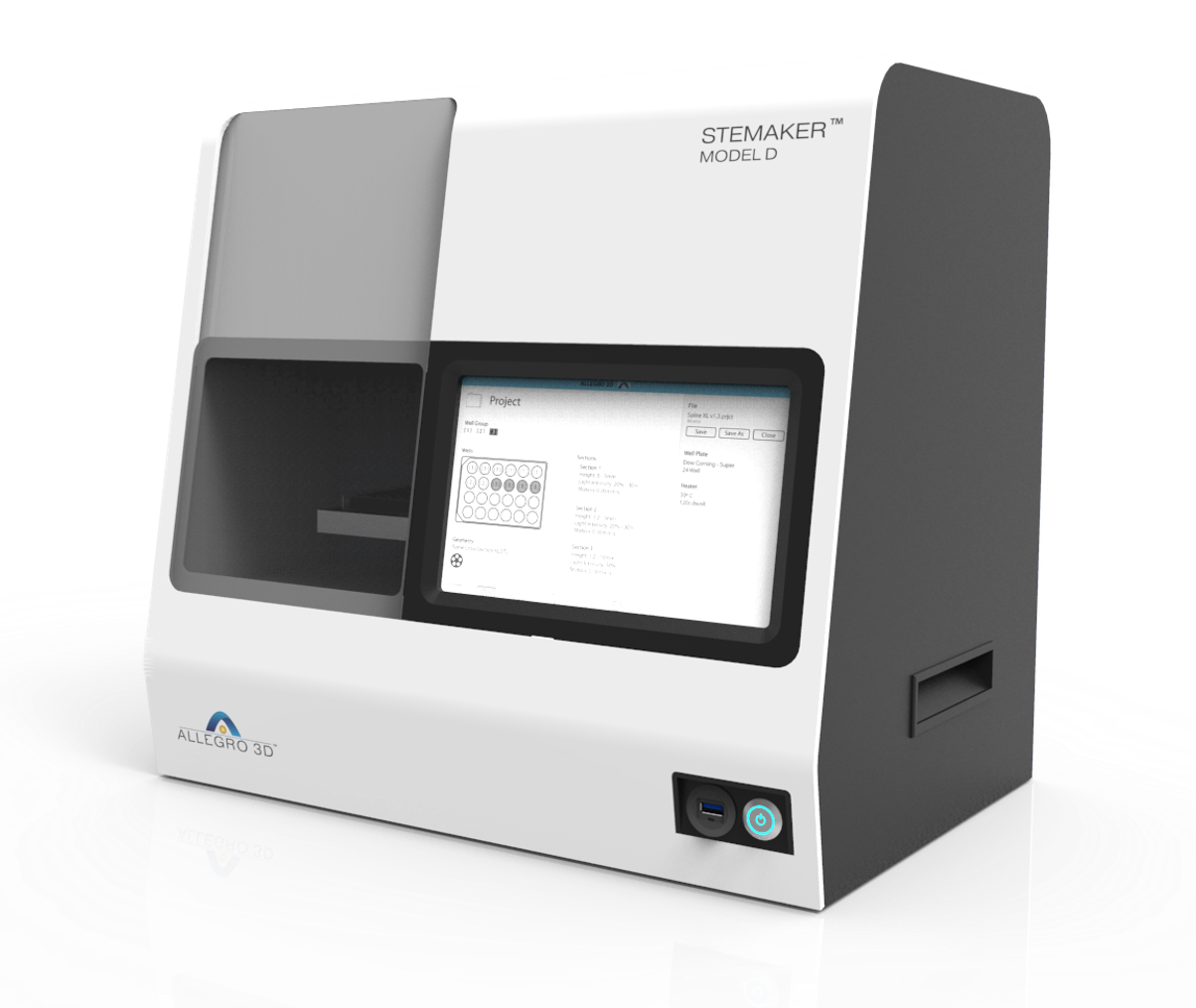



0 comments:
Post a Comment